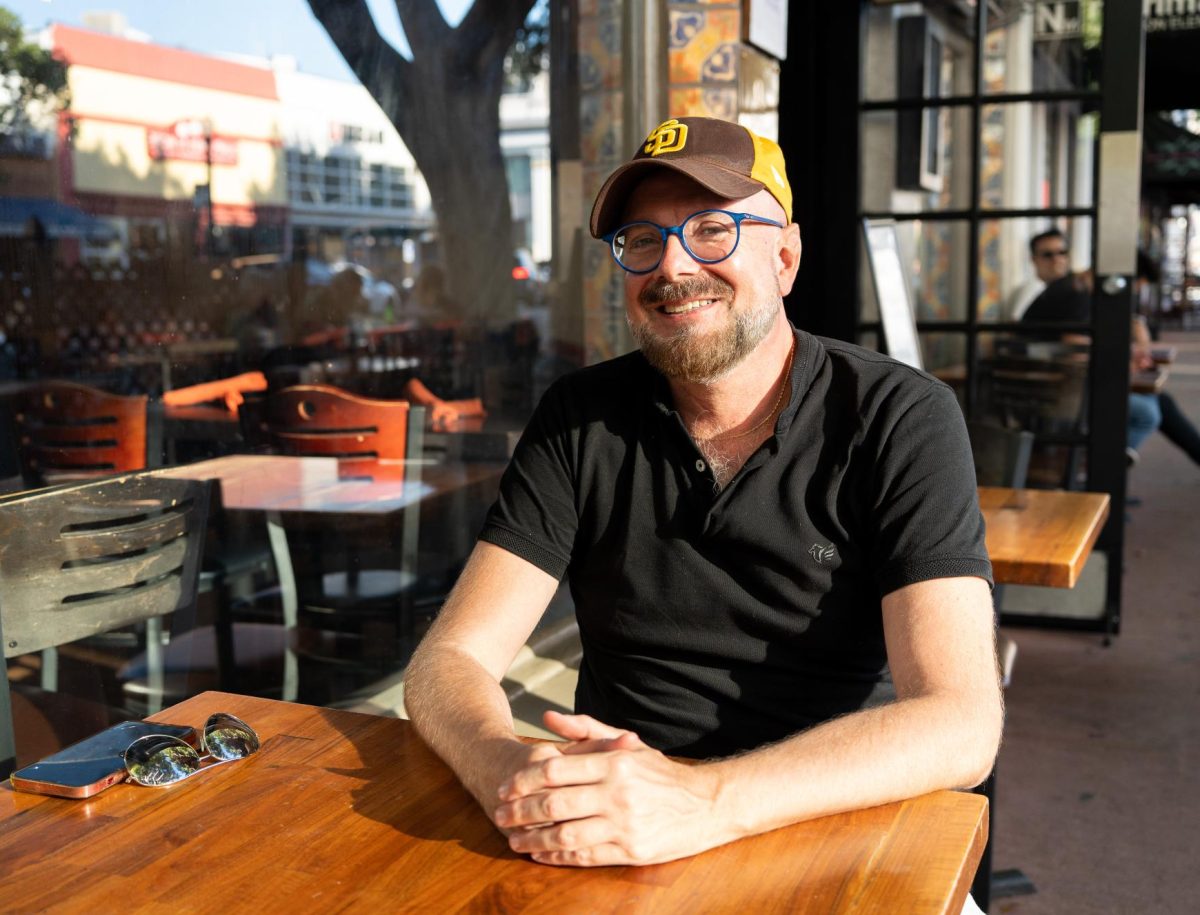In an effort to ease congestion and facilitate access to
campus, UCSD Transportation and Parking Services established several changes
over summer, including the introduction of new parking structures and revised
uses for those already in existence. While some of the changes have been met
with support, others were greeted with skepticism by frustrated students trying
to adapt to the new schedules and restrictions.
The modifications made over summer are small steps toward a
universitywide commitment to reduce carbon emissions, energy consumption and
reliance on imported fossil fuels, T&PS Director Brian d’Autremont
said.
One of the changes is
an online tracking system for campus shuttles, designed to enhance transit
efficiency and encourage students to use alternative forms of transportation.
The Automatic Vehicle Location system works through a global positioning system
unit installed in each shuttle, allowing students to track where the shuttles
are on their routes in real time, along with the percentage of passengers on
the shuttle.
“AVL can keep buses spaced out and cut the time students
spend waiting,” d’Autremont said.
AVL is accessible through any Web-enabled device on the
Blink directory or at www.ucsdbus.com.
In 2004, during his tenure as associate director of
transportation services at UCLA, d’Autremont was president of a panel that
sought to select a similar system for the university. However, the panel turned
down an offer to implement a tracking system similar to the one used by
UCSD.
“UCLA now has a system, but it is only tracking by Nextel
phone and not available as a database for management purposes,” d’Autremont
said. “They are looking at adapting [UCSD’s] system in 2008.”
While d’Autremont seeks to boost the use of public
transportation, numerous other sites on campus are undergoing construction,
including the North Campus Housing project that will encompass parking lots
P-355 and P-356. Both of the lots are currently home to student parking
spaces.
Overnight parking in Gilman Parking Structure has also been
eliminated, a move necessary to realign the structure’s function with its
original purpose, according to A.S. Transportation and Parking Committee
representative Alex Miller.
“Gilman is a commuter-minded structure that was being
occupied by resident students,” Miller said.
About 94 percent of the parking spaces in Gilman were used
for storage — overnight parking for students living on campus.
“The way it operated was unfair to students who park there
for classes,” d’Autremont said. “I have received positive comments about this
change predominantly from students.”
Two floors of student spaces were also eliminated from
Gilman, a change to which students were not necessarily as receptive.
“I don’t understand the changes,” Thurgood Marshall College
senior Robert Cordoni said. “Parking on campus used to be more convenient for
me. It’s such a hassle to get to campus now. Buses are always overcrowded, and
now finding parking is more difficult.”
D’Autremont hopes that the new $30-million Hopkins Parking
Structure will alleviate student parking issues caused by these changes.
However, the cost of building such a structure has inevitably increased permit
prices.
“The true cost of a lot is $275 [per space] per month,”
d’Autremont said of the Hopkins structure.
Completed for use in September and located near RIMAC Arena
and the San Diego Supercomputer Center, Hopkins contains 1,406 parking spaces.
About 800 of those spaces are reserved for undergraduate students, and
overnight parking is permitted.
After building Hopkins, there will be no new “S” spaces on
west campus unless another parking structure is built, which would further
increase parking permit prices, d’Autremont said.
An Oct. 19 public forum regarding the Hopkins Parking
Structure presented an opportunity for students to voice their opinions and
concerns about a possible temporary reallocation of parking spaces within the
structure.
“We want to gather input before making any decisions,”
d’Autremont said. “This is one way for
us to communicate better.”
D’Autremont revealed at the forum that Hopkins currently
contains 107 “A” spaces, 368 “B” spaces and 808 “S” spaces. During peak use, all “S” spaces are filled
while 318 “A” and “B” spaces remain empty.
Since faculty and graduate spaces are not being completely
occupied, the parking reallocation will open more spaces to students. The
proposed space redistribution will be 92 “A” spaces, 233 “B” spaces and 958 “S”
spaces.
After taking away faculty and graduate spaces, the
department’s goal is to leave a 70-space cushion for “B” spaces and a 40-space
cushion for “A” spaces.
During the forum, d’Autremont also expressed the need to
make parking spaces more contiguous for safety. The new space allotment will
add 306 “S” spaces to levels one and two in Hopkins while 156 “B” spaces will
be added to levels five, six and seven. The consolidation of spaces will eliminate
the need for drivers to hunt for spaces in different parts of the
structure.
In addition, East Parking and Regents Express shuttles will
be combined into a single East/Regents shuttle, effective Oct. 25.
Consolidation of the two routes is meant to increase the frequency of service
while saving the costs of fuel.
Last spring, there were 1,725 “A” parking spaces, 4,800 “B”
spaces and 6,331 “S” spaces on campus. After the changes made during summer,
there are now 1,826 “A” spaces, 5,305 “B” spaces and 6,219 “S” spaces,
d’Autremont said.
He added that the summertime changes, as well as future
plans, emphasize the need for environmental awareness among students and staff
at UCSD. Getting students out of their cars and encouraging them to utilize
alternative forms of transportation such as the free shuttles and buses will
cut back on air pollution as well as parking issues.
D’Autremont said that transportation and parking operations
differ greatly between UCSD and UCLA.
“At UCLA, essentially, undergrads get no parking,”
d’Autremont said. “The shuttle system is
minimal compared to UCSD. Their
[Metropolitan Transport Authority] system is more advanced compared to UCSD’s.”
— Additional reporting by Nimesh Rajakumar, Contributing
Writer







